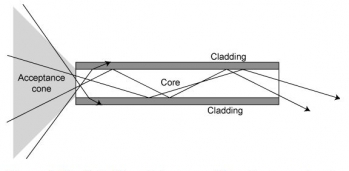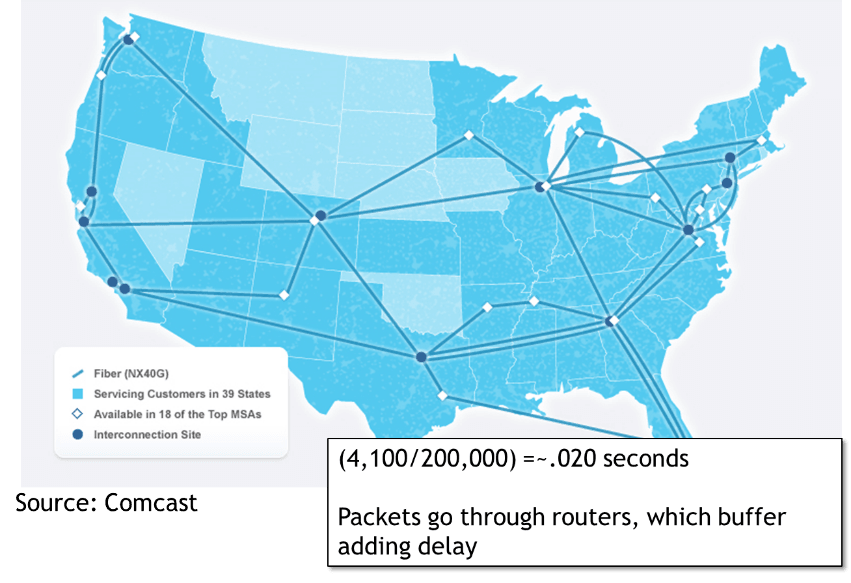When the legendary Admiral Grace Hopper would give a talk, she often handed out pieces of wire 11.8” in length, and educate her audience about the amount of time it took for electrons to traverse the length of the wire: 1/1,000,000,000 of a second, or, to round off a bit, electrons travel about one foot every nanosecond. In other words, it’s the same as the speed of light through free space.
Although Admiral Hopper did an enormous service to legions of students, she also left in her wake an enormous number of people who mistakenly think that it’s the same principle for fiber-optic cabling.
But the light speed through a fiber is a very different thing. In fact, it's about one-third than light through a vacuum The technical term to describe this is called "refraction." In simple terms, the light doesn’t travel in a straight line as depicted in the Figure 1.

Figure 1: Light through multi-mode fiber optic cable
Source: Wikipedia https://en.wikipedia.org/wiki/Optical_fiber
To further illustrate this concept, imagine building a tower in San Francisco, and another in New York City. Each tower is tall enough that a straight line between them is above the curve of the earth, and the weather is clear the entire way. Now, imagine transmitting a data packet through the atmosphere. A packet transmitted with light would take about .013 seconds to cover the 4,100-mile distance between the two towers.. That same packet transmitted through a fiber, would take about .020 seconds.
.png?width=450&name=N-comcast%20(1).png)
Figure 2: Fiber connectivity map across the US
Although no one has built a free-space optical link, there are existing networks with pretty long distances, that use towers rather than fiber. This is because the increased speed improves the profitability of certain applications, which makes it is easy to justify the cost over a fiber-optic link.
Applications of free-space optical link, such as with High-Frequency Trading, where milliseconds or microseconds count, can positively impact the profitability of trades.

 By: Harry Quackenboss
By: Harry Quackenboss